This section covers the plant health problems caused by biotic (living) organisms. Disease is a condition that disrupts the normal functioning of the plant, progress over time, and is caused by biotic organisms. These organisms are fungi, oomycetes (water molds), bacteria, viruses, nematodes and phytoplasmas.
How can we identify the problems caused by living organisms?
Regular monitoring and scouting can help to identify diseases. These three general characteristics can help narrow down the problem caused by a disease:
- The problem exhibits a random pattern on an individual plant or in the field.
- The problem appears at a low percentage initially.
- The problem progresses over time.
Select a Host below:
or create your own search:

Black spot of roses
Host: Rose
Pathogen: Diplocarpon rosae (fungal pathogen)
Diagnostic Features:
Black spot with diffuse borders (feathery edges), defoliation in 7-10 days after infection
Image credit: Nar Ranabhat, Assistant Professor, University of Tennessee

Cercospora leaf spot
Host: Hydrangea
Pathogen: Cercospora spp. (fungal pathogen)
Diagnostic Features:
Purple colored mostly circular shape at the initial stage. Later the spots enlarge and often become irregular and develop a tan or grey center with purple to brown border. Leaf spots first visible on older leaves at the bottom of the plant then spread upward.
Image credit: Nar Ranabhat, Assistant Professor, University of Tennessee
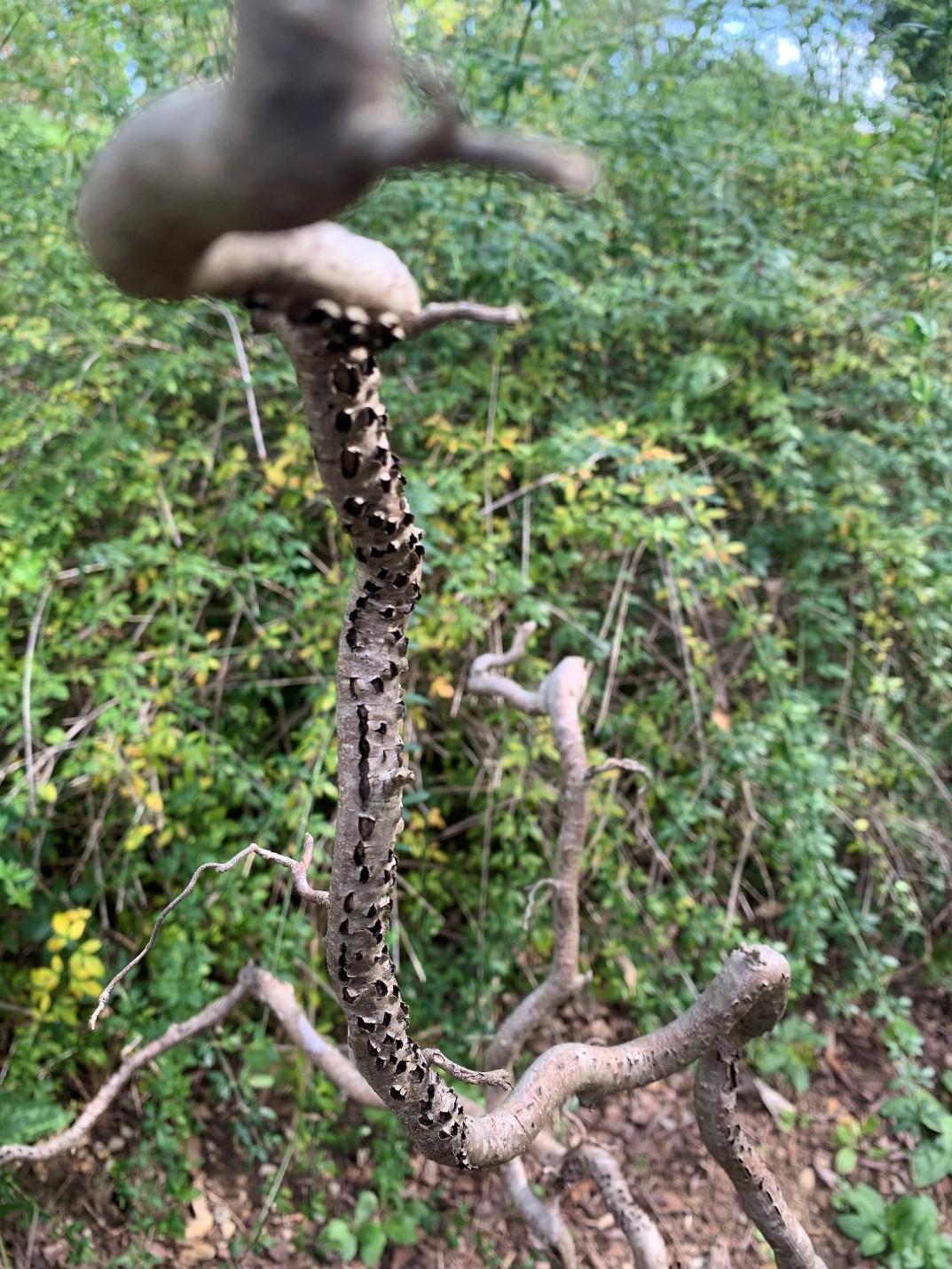
Eastern Filbert Blight
Host: Witch Hazel
Pathogen: Anisogramma anomala (fungal pathogen)
Diagnostic Features:
Cankers on branches or main trunks consist of black football-shaped or elliptical stromata (fungal fruiting bodies) formed in longitudinal rows on infected branches.
Image credit: Nar Ranabhat, Assistant Professor, University of Tennessee
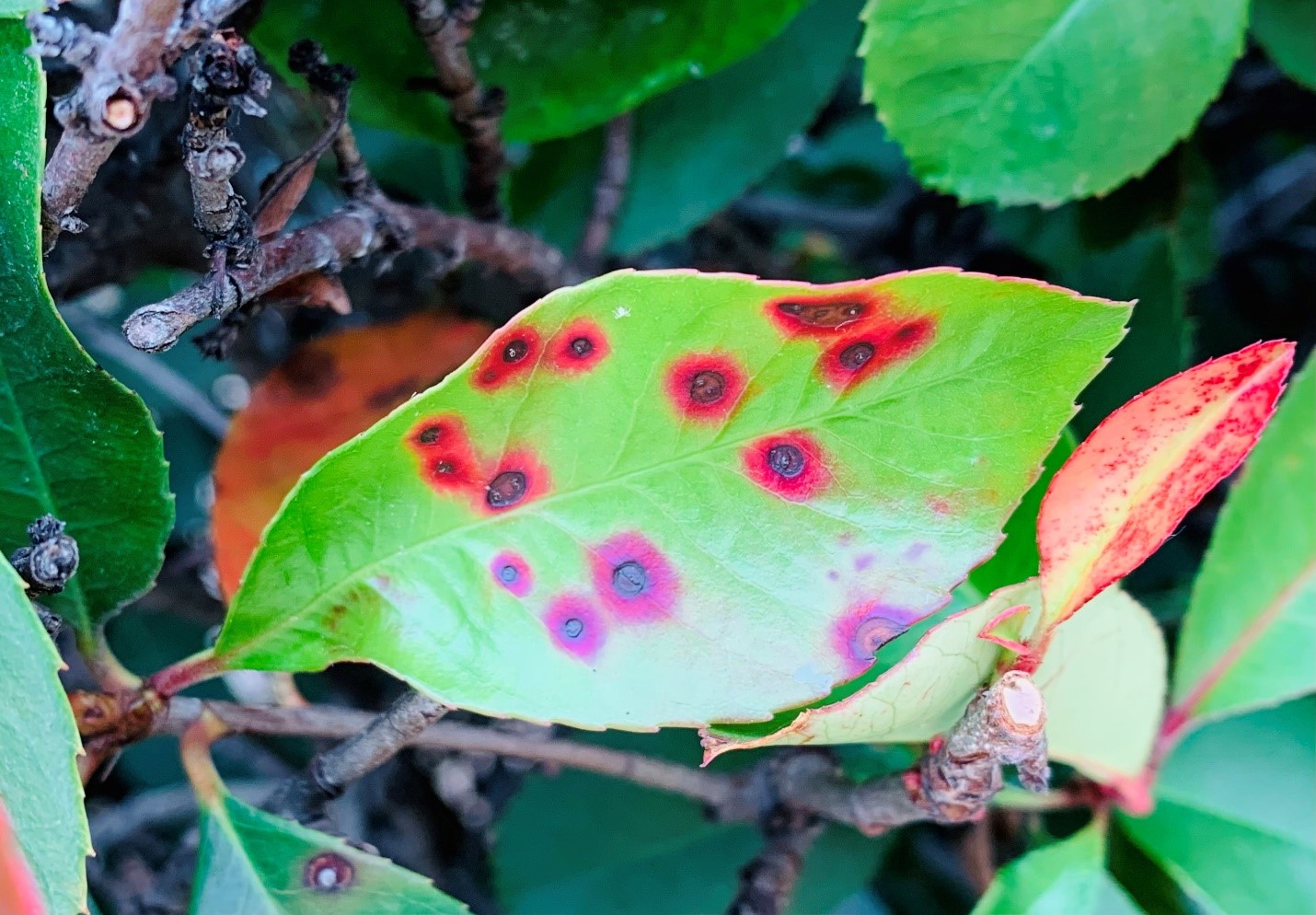
Entomosporium leaf spot
Host: Photinia
Pathogen: Diplocarpon mespili (fungal pathogen)
Diagnostic Features:
The symptoms initially appear as small, slightly raised spots with a darker red color on either side of the leaf, which later developed into spots with a depressed brown center with dark red margins. These spots have grayish centers of necrotic tissues with a distinctive dark red to marron halo or margin
Image credit: Nar Ranabhat, Assistant Professor, University of Tennessee

Powdery mildew
Host: Rose
Pathogen: Podosphaera pannosa (fungal pathogen)
Diagnostic Features:
White, powdery fungal growth on leaves mostly on the upper surface. Powery fungal growth can also develop on stem
Image credit: Nar Ranabhat, Assistant Professor, University of Tennessee
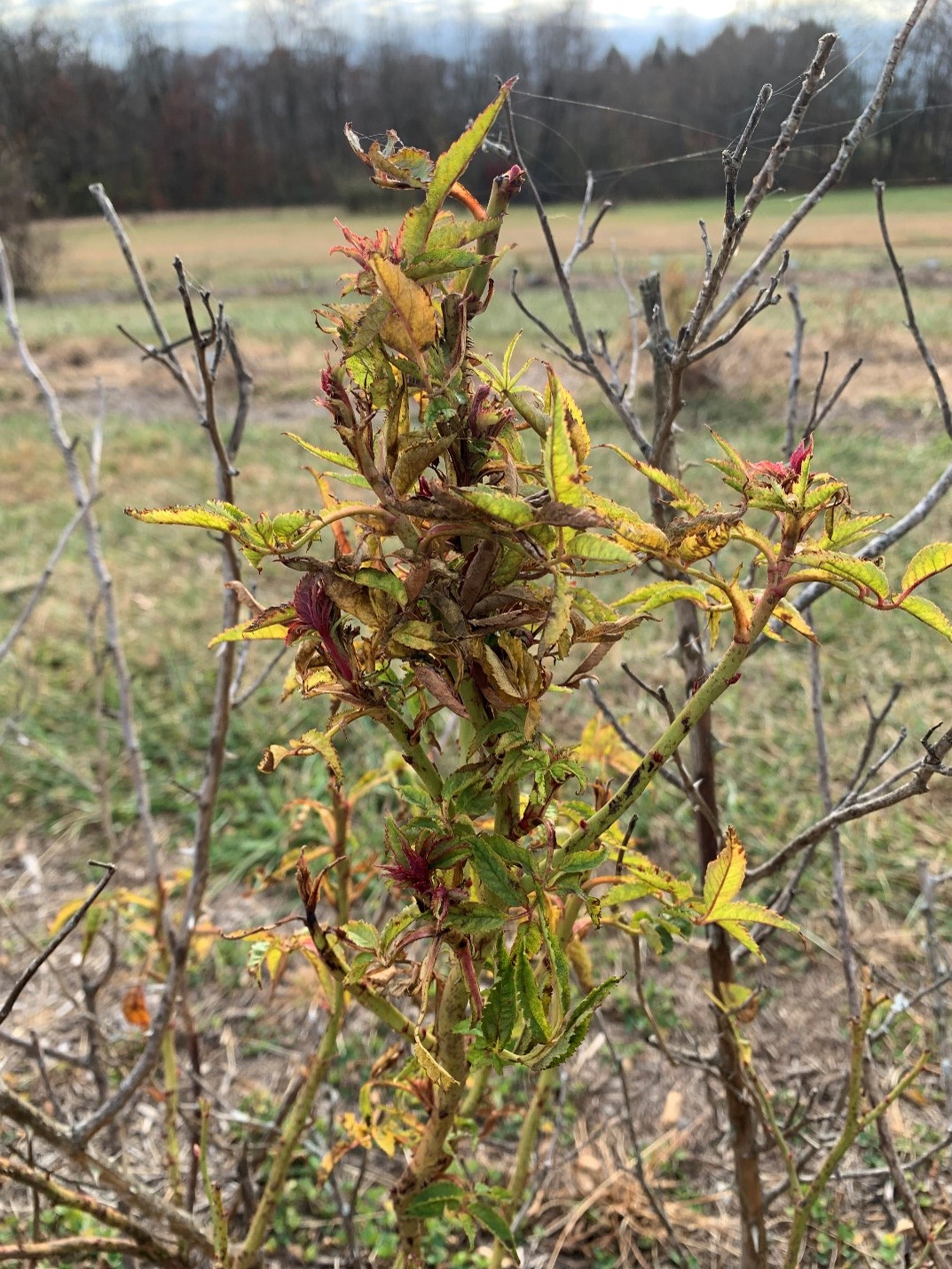
Rose rosette
Host: Rose
Pathogen: Emaravirus rosae (viral pathogen)
Diagnostic Features:
Early symptoms of rose rosette include strapped (thin) leaves, distorted flower buds, excessive thorniness and later shoot proliferation (multiple symptomatic shoots or rosette) or witches broom developed.
Image credit: Nar Ranabhat, Assistant Professor, University of Tennessee
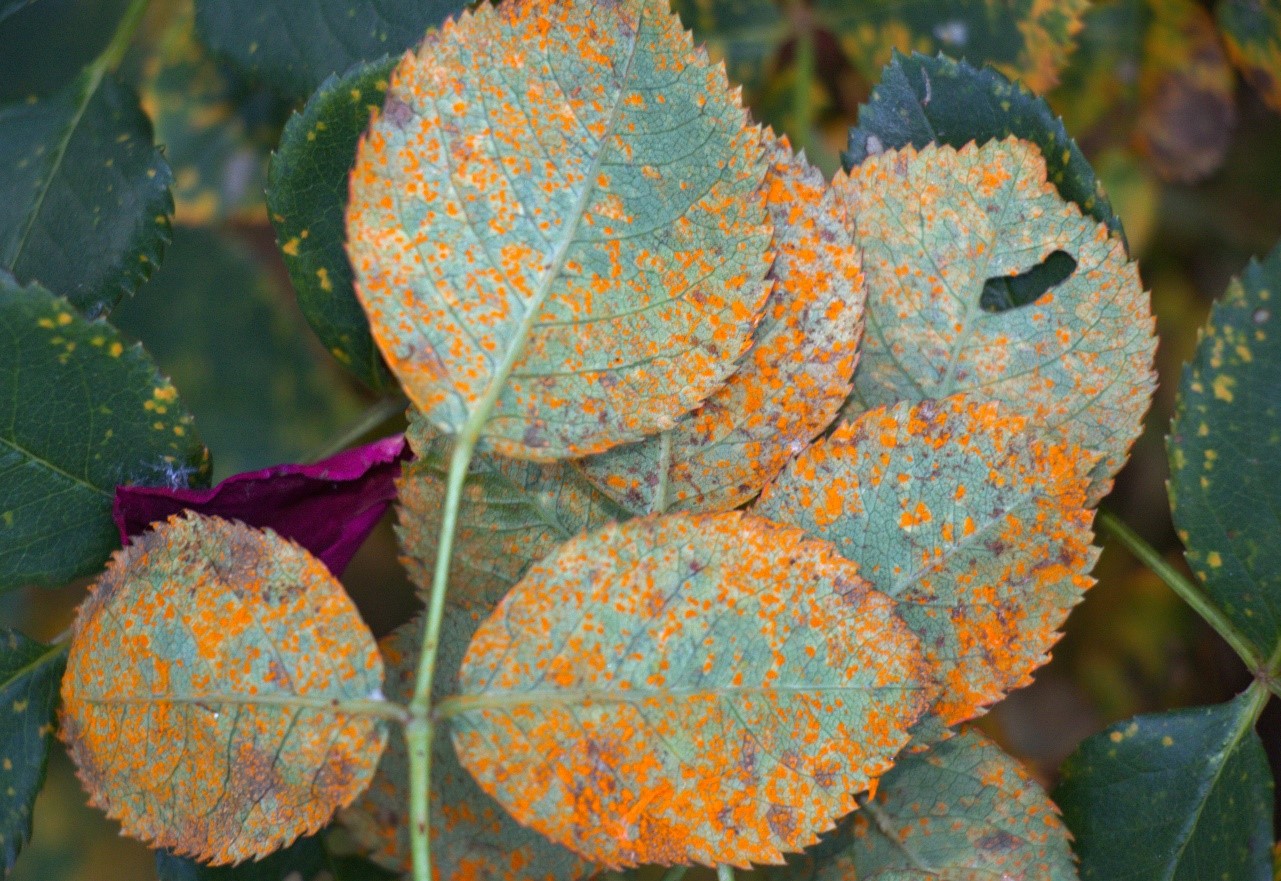
Rose rust
Host: Rose
Pathogen: Phragmidium tuberculatum (fungal pathogen)
Diagnostic Features:
Yellow spot on upper surface and orange-colored powdery pustules full of fungal spores on lower surface of leaves. Affected leaves may drop prematurely.
Image credit: Nar Ranabhat, Assistant Professor, University of Tennessee

Shot hole disease
Host: Laurel
Pathogen: Blumeriella jaapi (fungal pathogen) and Xanthomonas spp (Bacterial pathogen)
Diagnostic Features:
Small round holes in leaves of Prunus spp. Initially, reddish-brown or brown leaf spots appear in the spring and later in the season, the infected leaf tissue drops out and leaves small “shot holes”.
Image credit: Nar Ranabhat, Assistant Professor, University of Tennessee
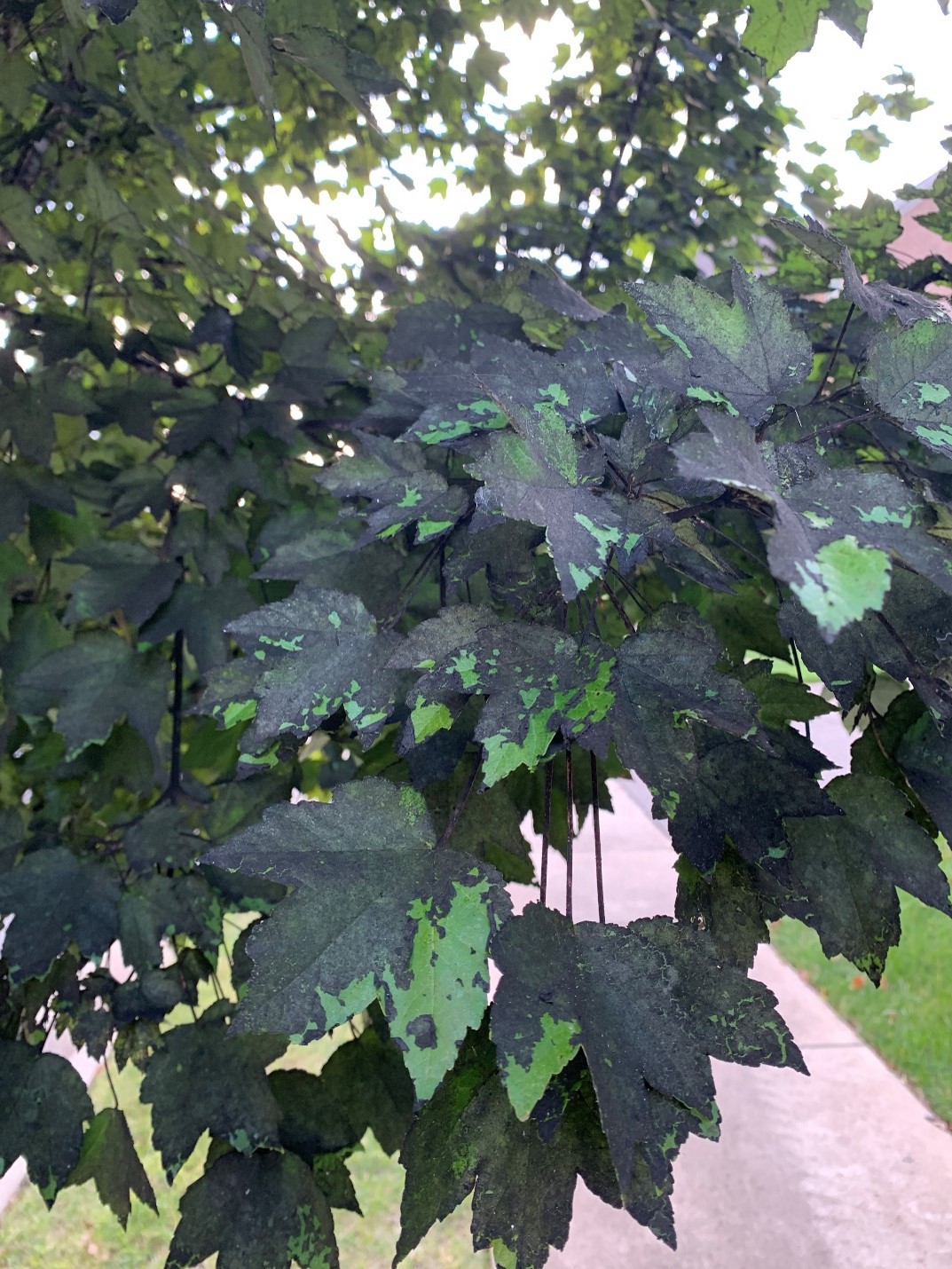
Sooty mold
Host: Maple
Pathogen: Capnodium elongatum (This fungus is not a pathogen but grows on honeydew secreted by aphids or soft scale insects)
Diagnostic Features:
Leaves or branches cover with black mold
Image credit: Nar Ranabhat, Assistant Professor, University of Tennessee